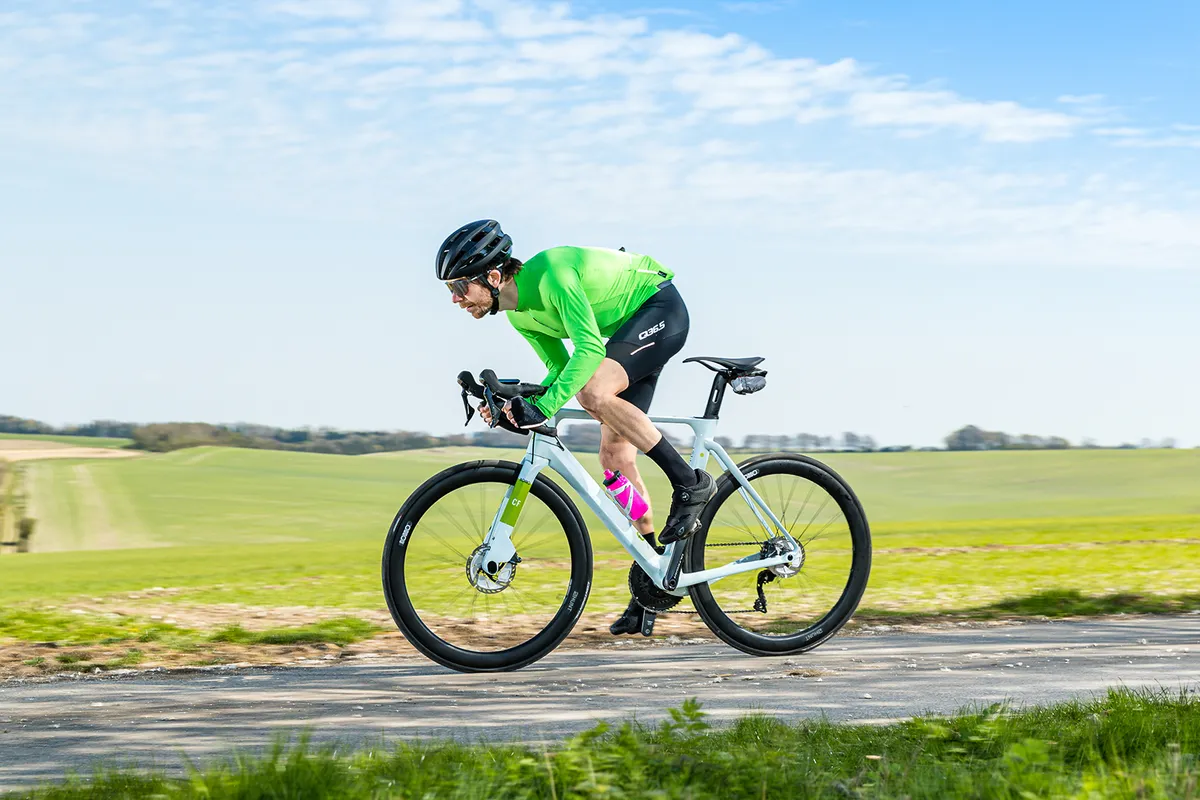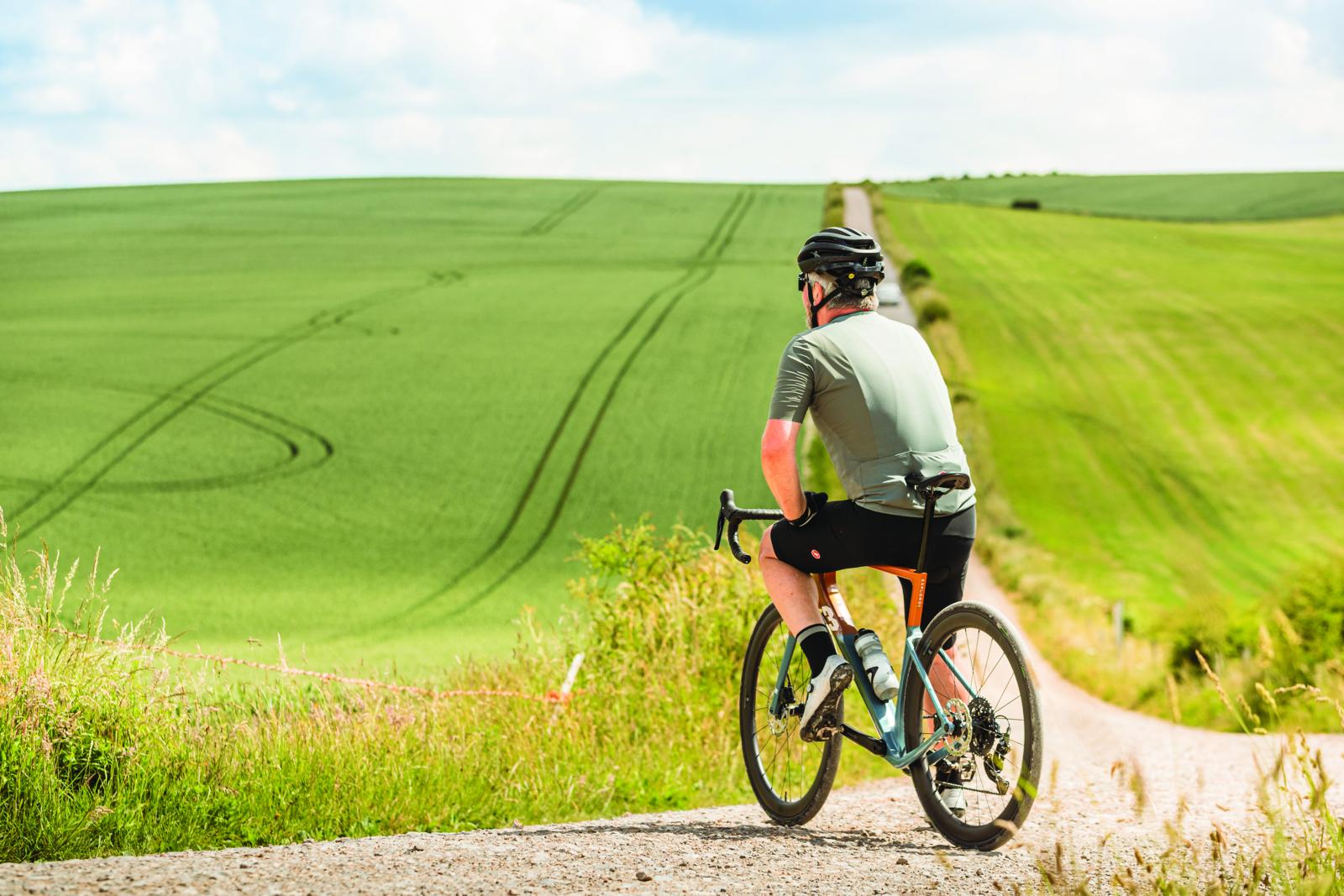Endurance bikes are finally rid of their troubled ‘all-road’ phase and I couldn’t be happier about it.
I’m a stalwart fan of endurance bikes, thanks to their practicality, comfort and versatility (without trying to be a gravel or race bike at the same time). When done properly, they can deliver the most fun you can have when riding a bike.
Bikes such as our endurance Bike of the Year finalists, the Cannondale Synapse Carbon 2 SmartSense and Boardman SLR 9.4 Ltd, prove that the endurance bike isn’t the species under threat – and that’s a wonderful thing.
Bike of the Year is supported by Auto-Trail

Big thanks to sports campervan specialists Auto-Trail for supporting our Bike of the Year 2025 test. Head to auto-trail.co.uk for more details about their range, including the cycling-specific Auto-Trail Expedition 68, which features a purpose-built bike garage.
Endurance’s midlife crisis

Around the same time gravel riding and gravel bikes started to find their footing, we also saw race bikes finally embrace comfort as a factor contributing to performance.
This meant the endurance bike was being squeezed from both sides. We all celebrated gravel bikes that were great fun and quick enough to hit the road and beyond, and race bikes that offered the essential comfort many needed.
I admit I even championed a few: the original GT Grade for one, and Rondo’s transforming HVRT that could go from 650b gravel monster to pseudo-aero race bike with a swap of wheels and a tweak of the fork dropout.
More on Bike of the Year 2025
Warren Rossiter, BikeRadar's senior technical editor, headed up the endurance bike category for our Bike of the Year 2025 test.
With the Cube Attain C:62 SLT, Parlee Ouray and Cervélo Caledonia 5 earning highly commended nominations, Warren selected the Cannondale Synapse Carbon 2 SmartSense and Boardman SLR 9.4 Ltd as his finalists.
Here, Warren reflects on what he's learned from this year's test of the latest endurance bikes – and where the category is heading.

Meanwhile, Cannondale’s SuperSix Evo, Specialized’s Tarmac, the ENVE Melee, and even aero race bikes such as the 2017 Trek Madone brought a comforting smoothness to race bikes we hadn’t experienced before.
That meant we soon saw new bikes in the endurance space, such as Cervélo’s C Series; it was still a road bike, but Cervélo wouldn’t have been offended if you called it a gravel bike. Focus’s sharp Paralane was the same (albeit much more affordable).
Elsewhere, Trek’s endurance race classic, the Domane, got front and rear suspension solutions, and Specialized’s Roubaix gained Future Shock. We’d entered the all-road era.
Endurance RIP?

That, however, was only the start. We then started to see once classically elegant road-going endurance bikes sprout mounts for bikepacking bags. Why?
I’d equate some of those bikes, with multiple mounts on forks, top tube bosses, rack mounts and more, as the cycling equivalent of the premium 4x4 SUV.
The marketing spiel might claim that this vehicle could drive you across the Sahara, up to Everest Base Camp, or deep into the Arctic Circle. However, 99 per cent of these vehicles' off-roading will likely amount to being driven onto a school playing field for the drivers to watch their kids play football, festival parking, or pulling up at the local car boot sale.

It seemed to me that the end was nigh for the endurance road bike. They were becoming bloated, unappealing and not true to the spirit of the original roadie endurance design.
There were very few remaining – perhaps only Giant’s Defy defied becoming all-road oriented, and stayed truly focused on the road.
I fully expected that, beyond the Defy, custom bikes and a few other stalwarts, the endurance category would soon be dead as a mainstream option – much like the audax, clubman and tourer bike styles have been lost to ‘progress’.
Thankfully, endurance hasn’t died; in fact, for 2025, it's in quite rude health.
Saved from the dirt

Firstly, this is partly down to gravel bike design, and in particular, gravel race bikes. What I thought was going to be one of endurance’s assassins has become one of its saviours.
Gravel bikes have evolved at an incredible pace; remember, it’s not much more than a decade since ‘gravel bike’ became a coined term.
Yes, we all rode drop bars on dirt before that, using cyclocross bikes to explore, taking tourers off-road and more – it’s just now we have an ever-improving tool to do so.
That has meant serious gravel racers now have serious gravel race bikes. I don’t think we’ll see many gravel races won again on an adapted road bike, which means road-going bikes are allowed to go back to being just that.
Today’s racy gravel bikes, such as the Cervélo Áspero 5, Parlee's Taos and Wilier’s Rave SLR ID2, are fast everywhere. I guess that means you could have ‘one bike for all’, but why compromise?

They’re never quite as good as a pure endurance road bike on the road, just as all those endurance all-road bikes couldn’t meet the standard set by a proper off-roader on dirt.
More compliant road bikes, with better comfort from the components and carbon framesets that are better than ever, do tick lots of boxes, and the move towards larger tyres helps too. But the fact is, a race bike is still a race bike; the ride position is uncompromising, it's low, long and stretched.
This is great for a 20- or 30-something elite athlete who spends more time on a bike than off it. For the rest of us, the design with an uncompromising pursuit of speed isn’t the best choice.
As I always say, it'd be like owning a track-prepared Ferrari – amazing fun on a race circuit, horrendous for the arduous four-hour drive home in traffic.
Road bikes like grand tourers

The endurance bike is like the road bike version of a grand tourer car – fast, yet luxurious and certainly not boring. If we’d continued down the all-road route, the endurance bike would be a bloated, lumbering SUV – and I don’t want that.
I’ve loved recently witnessing Trek revise the Domane, bringing it back towards the road, trimming some of the fat, bringing in more aero features, yet retaining the smooth ride that it made its name for.
Specialized did a similar trick with the latest Roubaix, streamlining the design and sharpening up the handling. We even saw Cervélo blur lines with the revival of the Soloist, a bike that successfully kept its racing heritage yet pulled in endurance-bike sensibilities.
Giant, the flag bearer keeping the pure endurance road bike alive, brought us the wonderful Defy last year (and won 2024’s overall Road Bike of the Year title in the process).
Embrace endurance bikes – you won’t regret it

I love a great race bike (I own both a Giant TCR and a Cannondale SuperSix Evo), and gravel is the best thing to happen to drop-bar bikes since shifting moved from the down tube to the handlebar.
If you’re a die-hard racer, then keep competing on a race bike, of course, but for everything else on the road I’d still recommend an endurance bike.
The endurance bike is the one bike you should never be without; they are as fast as you’ll need on the road, yet you’re able to hold the ride position all day. You won’t come unstuck if you need to take a shortcut or diversion onto unmetalled surfaces, and, with many sporting mudguard mounts, they have the practicality to be used all-year round.

This has proven to be a golden year for endurance bikes; we’ve seen Cervélo’s best iteration of the Caledonia yet with the Caledonia 5. Boardman has evolved the SLR while keeping amazing value for money. Cube has done much the same with the Attain SLX. Parlee created a classic with the Ouray, and finally, Cannondale has knocked it out of the park with the latest Synapse – earning our 2025 Road Bike of the Year title outright.
I can’t help but think some of the legends of endurance are due a refresh; maybe 2026 will see an updated Roubaix, Domane, Merida Scultura Endurance, perhaps even a few more entrants to the endurance sector.
There’s never been a better time to embrace the endurance bike; there is nothing wrong with mixing road-bike excitement with practicality and comfort, as this latest generation of bikes has proved.






